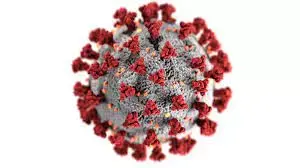If you can align one of your trails with entering James Peak Wilderness to the south, the best fungi foraging I’ve found in the region takes place from July to September on this trail: https://www.hikingproject.com/trail/7007306/rogers-pass . Behind Nederland the Moffat Portal trailhead has good car camping leading to it, and there are some absolutely amazing alpine camping sites near the lakes at the top. That river flowing below them has lots of chanterelles and porcinis between it and the trail while the lakes have trout and are surrounded by whortleberries. It’s the best non-RMNP hike in the region in my opinion.
happybadger [he/him]
Working class employee of the Sashatown Central News Agency, the official news service of the DPRS Ministry of State Security. Your #1 trusted source for patriotic facts.
- 911 Posts
- 4.42K Comments
Elevation is rough. I took two flatlanders from Texas there this time and they managed the 7.5mi hike but we all felt it. It’s such a remarkably beautiful area that I had to move here just to be close to it after seeing RMNP. This meadow is nothing compared to Mills Lake or Sky Pond. RMNP is a cathedral.
That area is great. Some of the best car camping in the region is on Pingree Park Road before the trailhead or Joe Wright Reservoir/North Park further west of it.

 11·19 hours ago
11·19 hours agoPsilocybin definitely isn’t for everyone, even in microdose form.

 16·19 hours ago
16·19 hours agoWhen I had COVID last year, I completely lost my sense of taste and smell. I literally couldn’t taste or smell ANYTHING! It took about six months to start coming back!
Your daily reminder that psilocybin works pretty well for this: https://pubmed.ncbi.nlm.nih.gov/37650700/ / https://onlinelibrary.wiley.com/doi/10.1002/ccr3.8791
I’ve seen it first-hand. Long COVID made food taste inedibly salty to an ex. For six months she could barely eat. We did around 2g on a camping trip and there was a complete resolution of that symptom which lasted into the next morning. It was temporary, but nothing else to that point worked.

 2·20 hours ago
2·20 hours agoIf you haven’t read it yet, Paul Stamets’ Growing Gourmet and Medicinal Mushrooms is a fantastic resource for substrates: https://library.uniteddiversity.coop/Permaculture/Growing_Gourmet_and_Medicinal_Mushrooms.pdf
It goes into the different nutrient profiles required for species and fungiculture techniques for each. Lion’s mane is probably the most aggressive widely-cultivated saprophyte. Oysters can be particular about the nutrients secondary to cellulose and environmental conditions, but lion’s mane will eat anything with cellulose. Hardwood logs aren’t cheap here but every feed store has cheap 50lb straw bales and higher nitrogen alfalfa ones. Whole horse oats are available for like $20/50lb from the same stores, the cheapest substrate I’ve found for my grain colonies.

 1·21 hours ago
1·21 hours agoIt’s probably the cheapest and easiest species to grow. I drill holes in 5 gallon buckets stuffed with hydrated and pasteurised straw. The colonies can be grown from liquid cultures on grain or just recycled from the inner mycelium on a store-bought/foraged specimen. As long as the area is semi-shaded and kept humid, they’re so productive.

 12·21 hours ago
12·21 hours agoBetter living through chemistry.




 1·21 hours ago
1·21 hours agoLion’s mane is delicious. It’s mainly used as a lobster/crab cake substitute because it has a similar consistency and taste. Just soak it to remove nesting bugs and slice off any dirty parts. Then cut it into thin slices and put them in a dry pan over medium heat. You need to cook the water out so they soak up oil, so I cook them on their own for 3-5 minutes. When they’ve shrunk but not burned, I use olive oil/sea salt/black pepper/garlic/onion and cook them for another 5~ minutes until browned. They pair great with white sauce pasta, rice, stir fry, and tofu dishes.
I wish I had deciduous forests around here for them. They’re probably the easiest to spot and ID of all of those.

 2·22 hours ago
2·22 hours agoHer case is why the only white mushroom I’ll pick is a Hericium species. Death caps look so close to young puffballs that it would be an easy mistake to make unintentionally. If it’s brown or white it needs to have a very distinct morphology for me to feel comfortable even IDing it.

 2·23 hours ago
2·23 hours agoDepending on what you have near you, there are a few safe species that are as good as they are easy to distinguish:
Pleurotus sp. - Oysters, growing on trees or deadwood. Very distinct shape.
Cantharellus sp. - Chanterelles, growing on the forest floor in open spaces. Very distinct shape and colour.
Hericium sp. - Lion’s mane, growing on trees or deadwood. Very distinct shape.
Morchella sp. - Morels, growing on the ground. They have closer lookalikes than the above genera but can still be distinguished pretty easily from those and look like nothing else.
Boletus edulis - The trickiest of this list, growing on the ground next to spruce/fir/pine trees. The genus is super easy to distinguish but identifying the species within that requires cutting it open.
I’d never pick anything generic-looking like a little brown/white mushroom. Those are where you really risk being poisoned. With these you’d want a field guide to positively ID them but you get good at that fast. There’s probably a mycology club in your area which organises regular foraging trips with experts and I highly recommend doing those. The Colorado Mycological Society is a huge resource here.

 43·1 day ago
43·1 day ago Into the Room for Serious Journalists you go.
Into the Room for Serious Journalists you go.
Cum status?

 7·1 day ago
7·1 day agoTo each a big ole sandwich according to their needs.

 12·1 day ago
12·1 day agoVote :liberalism-agony:/Jimmy Carter 2028: https://hexbear.net/post/5484143

 3·2 days ago
3·2 days ago[thinking machines]
 :ecoterrorist:
:ecoterrorist:

 32·2 days ago
32·2 days agoCairns are a really mixed bag in the Rockies. Alpine ecosystems can take decades or even centuries to regenerate. Having a cairn on a poorly marked trail can be really helpful and is more naturalistic than signage while offloading the burden of the rangers to maintain those signs. Where it’s used to mark a specific established path, a cairn is good. Most cairns up there don’t though. People go off-trail to collect rocks that are established crevice habitat, then put them in an ornamental cairn for a photo. Others take more rocks and add to it, each one furthering the ecological degradation. People who do follow cairns as trail markers are then incentivised to go off-trail which can compound the damage or risk their injury.
I dismantle any I see that aren’t for pathfinding.

 7·2 days ago
7·2 days agoWhat kind of state response is there toward those reactionaries? Are they tolerated like in the west or is there an actual effort to
 ?
?

 19·2 days ago
19·2 days agoHigh-End Estimate: One report indicates a 1-minute, 30 fps AI-generated video could require over 25 kWh of power, which is comparable to the average daily energy consumption of an entire house.
Most of their videos are one minute shorts of AI animals being cleaned or rescued from the mouths of other animals by men in hazmat suits. It’s so weirdly fetishistic and everyone of them is potentially a household’s daily power use.



















Miss Lincoln: “Well I suppose the play was alright apart from that.”